I recently acquired a C1-5 soviet-made oscilloscope in unknown condition that has been sitting in a workshop for 18 years. I was not able to find a manual.
When turning it on (y-input and x-input disconnected) a single dot appears on the screen. Changing the time-base setting does not make the dot sweep horizontally. However the y position of the dot responds as usual to frequency inputs. The only way of changing the x position currently is using the x shift knob.
I tried to diagnose the problem by connecting a 100Hz square signal. This input results in two dots that are vertically apart in one single x position.
My current assumption is that some of the hardware responsible for the x-deflection is broken. This would explain why the shown signal is in a reasonable y-position but in a semi-constant x-position.
Any help is greatly appreciated since I am not very familiar with the analog kind of oscilloscopes. Let me know if I should provide pictures of the output on some settings that could help anyone diagnose the problem.

